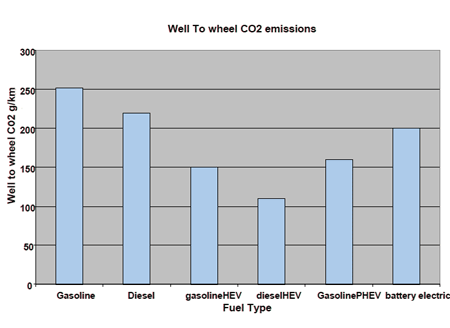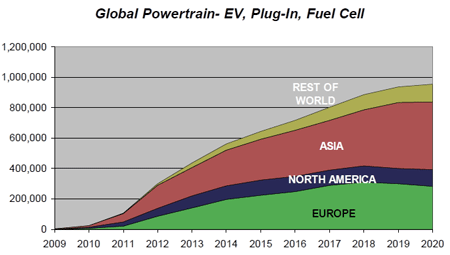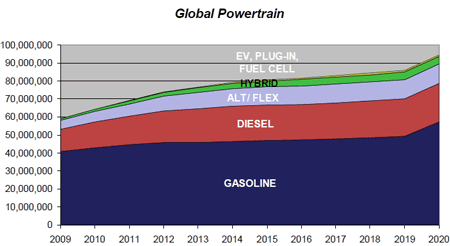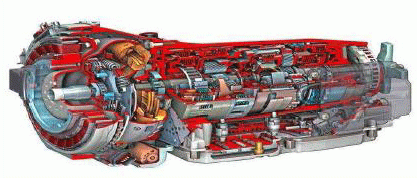Electric and Hybrid vehicles – threat or opportunity for the Powder Metallurgy industry?
Valuable analysis of these questions was provided by K S (Sim) Narasimhan and E Boreczky (Hoeganaes Corporation, USA) in a presentation in the Special Interest Program on PM Materials for Alternative Energy at MPIF’s PowderMet 2011 Conference, held in San Francisco, May 18-21, 2011. Dr David Whittaker reviews this presentation for ipmd.net.
Alternate power sources in automobiles
The presentation by Narasimhan and Boreczky identified and discussed various categories of electric/hybrid drive, focusing on:-
• Battery electric vehicle (BEV)
• Plug-in hybrid (PHEV)
• Extended range electric vehicle (EREV)
• Hybrid electric vehicle (HEV)
• Fuel-cell vehicle (FCV)
For BEVs, propulsion comes entirely from batteries and battery re-charging comes entirely through connection with the electricity grid. In EREVs, a small internal combustion engine makes a contribution to the extended range but no contribution to battery re-charging.
In PHEVs, an internal combustion engine provides some of the propulsion and makes a contribution to battery recharging.
In full HEVs, propulsion is provided by a combination of battery and internal combustion engine and the engine also caters for all of the battery re-charging requirement with no need for connection to the grid.

Fig. 1 “Well to wheel” emission impacts of various propulsion options (Courtesy Hoeganaes Corporation)
In terms of “Well to Wheel” CO2 emissions (Fig. 1), the full HEVs offer the “greenest” solution, presumably because an internal combustion engine is a more efficient convertor of fuel to power than an electricity power station at current levels of fossil fuel power generation efficiency. The use of a diesel engine for the auxiliary power in an HEV turns out to be more beneficial than a gasoline engine in terms of emissions, presumably because of its superior fuel economy per mile.
Early predictions had suggested that electric and hybrid vehicles might capture around 15% of the total global light vehicle market by 2020. This presentation, however, provided predicted market penetrations that were significantly down-rated from these levels.

Fig. 2 Projected growth in production volumes to 2020 for electric, plug-in hybrid and fuel cell vehicles (Courtesy Hoeganaes Corporation)
Fig. 2 predicts a global market for BEVs, EREVs, PHEVs and FCVs combined of only around 950,000 p.a. by 2020. At this time, total light vehicle production levels are projected to rise to around 95 million p.a. globally, i.e. a market penetration of only around 1% for these types of electric vehicles.
The prime impediment to the market penetration of EVs was stated as being high battery costs and the perceived customer resistance to the impact on vehicle selling price compared with conventional, internal combustion powered vehicles. The impediments to market penetration by fuel cell vehicles, on the other hand, were seen as being related to on-board hydrogen storage issues and to the need for the development of a hydrogen re-fuelling infrastructure.

Fig. 3 Predicted changes in the make-up of the global vehicle market to 2020 (Courtesy Hoeganaes Corporation)
Fig. 3 indicates that market penetration for full hybrids will be higher, but that this category of vehicle will still only account for around 2.5% of the total vehicle production in 2020.
This figure also shows that, globally, the annual production volume of vehicles powered solely by internal combustion engines will have risen by almost 50% from current levels, albeit that a proportion of this increase will come from engines burning alternative fuels. There seems little concern that electric and hybrid drives will signal the death knell for PM engine component applications in this timescale.
Further good news for PM came from the revelation that, in the electric and hybrid vehicle designs announced by automotive OEMs, there is no accompanying plan to switch transmissions from mechanical to electrical systems. Although Fig. 4 shows an automatic transmission unit, hybrids could equally use other conventional transmission systems (e.g. standard manual or dual-clutch transmissions).
So, the other dominant automotive application sector for PM structural parts, the transmission, will also remain a viable market. Indeed, the revelation that current trends in automatic transmissions are towards 6-speed or even 8-speed transmissions is even better news for PM!
There will also be new PM opportunities in electric and hybrid drives. Electromagnetic parts, both sintered and non-sintered, will find increasing use in such drives and the availability of extra power will allow the use of electromagnetic actuators, sensors and controls, compared with mechanical or hydraulic alternatives.
Author: Dr David Whittaker is a consultant to the Powder Metallurgy and associated industries. Contact +44 1902 338498 email: [email protected]
News | Articles | Market reviews | Search directory | Subscribe to e-newsletter






